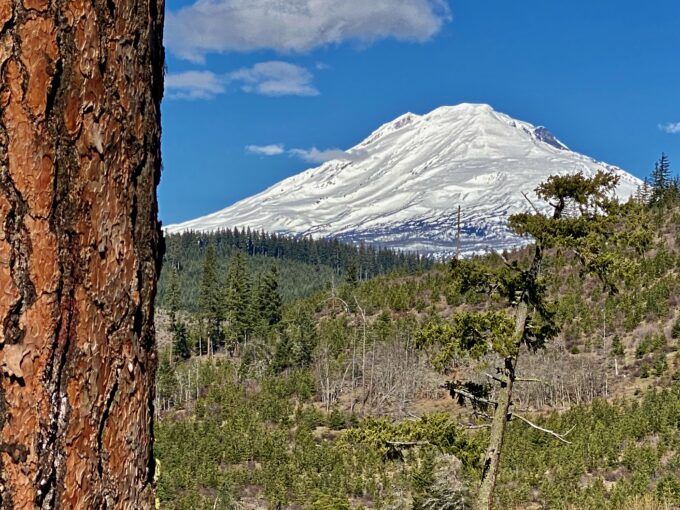
Mount Adams, Gifford Pinchot National Forest. Photo: Jeffrey St. Clair.
We’ve all noticed the significant increases in visitation and recreation use and the conflicts that brings; whether it’s full campgrounds, overcrowded trails or displaced and habituated wildlife (including grizzly bears). The U.S. Forest Service needs to take a comprehensive look at recreation on our public lands and define the recreational carrying capacity for the National Forests in Region 1.
The former Flathead National Forest supervisor who supported expansion of the Holland Lake Lodge said he thought the Forest Service is obligated to meet increased demand. However, without limits this can result in everything everywhere all at once. This can be seen on the Custer Gallatin National Forest which is overrun by development and recreation yet its revised Forest Plan designated even more recreation areas and expanded the number of permitted outfitters and guides and their seasons of operations. The land and wildlife suffer from such expansions.
A major issue has become the lack of restraint from recreational users. Climbers want bolts in wilderness, mountain bikers want to ride within wilderness, snowmobilers want to ride off-trail in alpine habitats proposed for wilderness designation and runners want to hold races in bear habitats. When users do not practice self-restraint, managers must step in to limit the impacts.
Everybody’s recreational use has impacts and claims that “our use has no impact” can be set aside. Some uses impact not only wildlife but other uses. Mountain bikes coming down trails at high speed is a serious conflict with hikers and horseback riders. Allowing mountain bikes on all non-motorized trails doesn’t cut it. Bikers have proposed separate trail systems: one for hikers and horseback riders and one for bikers. This only expands recreation use over a larger footprint, increasing conflicts with wildlife, soils and water quality.
The Forest Service says it tries to balance the increased demand with resource protection, but how do you balance something you haven’t measured? Chris Servheen, former national grizzly bear recovery coordinator, told the Interagency Grizzly Bear Committee that ample science exists to do this. This is important in determining where mountain bikes will be allowed, how many outfitter trips, party size, etc.
Before Holland Lake most of the public had never heard of Special Use Permits and Categorical Exclusions. SUPs are awarded to outfitters, guides, ski resorts and others who operate businesses on National Forests. Categorical Exclusions avoid detailed environmental analysis and are usually done without public notice and involvement.
Despite the controversy, the Flathead issued or re-issued more than 20 SUPs for 2023 with Categorical Exclusions. This approach does not consider or reveal the cumulative effects of these decisions on wildlife, soils and water quality.
Most forest users do not hire guides. On top of this unguided use, the Lolo National Forest currently has 132 recreation related SUPs with 68 for outfitting and guiding with nearly 500 commercial trips in 2022. Guided parties tend to be far larger as there is a profit motive involved. There are another 18 SUPs for recreation events. How many people do each permittee and event bring into the Forest each year? What will the Lolo do when receiving new applications for expanded uses? The answer may be the new SUP issued for commercial rafting on the Clearwater Canoe Trail. Without forewarning, long time users discovered a busload of rafters and this new use has changed the traditional quiet nature of the use and the solitude of the area.
Overuse and overcrowding on our public National Forests must be addressed. Otherwise the places we visit and enjoy won’t be as enjoyable anymore and the ecosystem itself will be forever compromised.